Diagnosing Air Conditioning
May
29
2014
Our central air wasn’t working, so I had to fix it.
The furnace and thermostat were working fine, because warm air was blowing throughout the house. After a couple of minutes and it still wasn’t blowing cold air, I started looking around.
First step, walk outside and see if the fan was running.
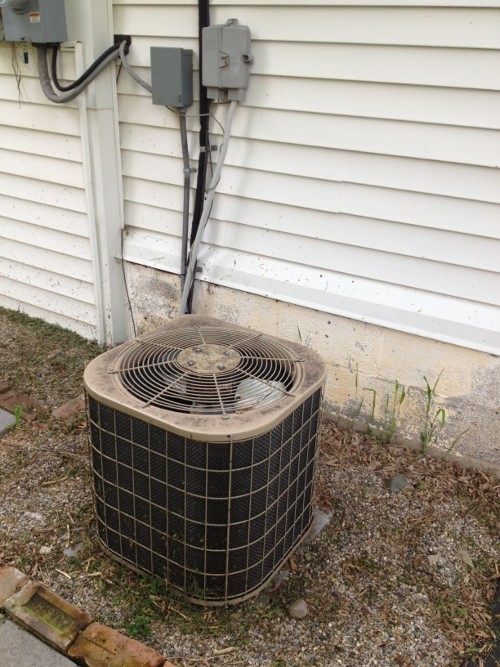
It was not.
Second step, look up “central air outside fan not working” on the internet. Also, “how to check air conditioner” and “troubleshoot central air”.
Third step, start probing around the unit. I used a standard voltage sensor, shown here.

Here are the steps for probing around.
Step A: Turn off the power
At the fuse box
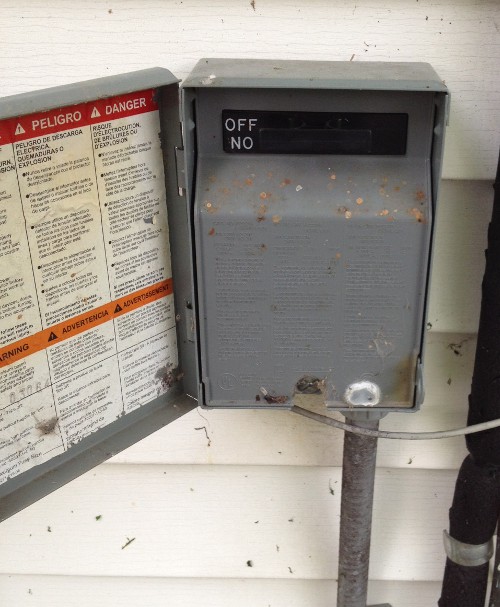
Step B: Open the fan unit
At the back
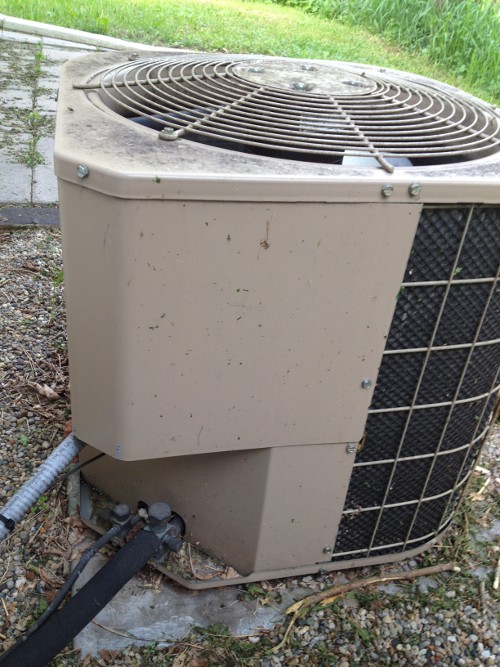
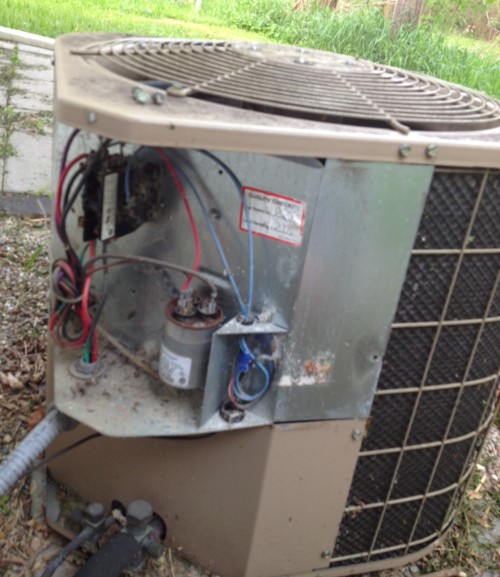
Here you can see the relay (contactor) and capacitor. The capacitor is the metal can on the bottom right of the enclosure. The relay is the black thing with the white label at the top left, with all the wires.
Step C: Turn the power back on
At the fuse box
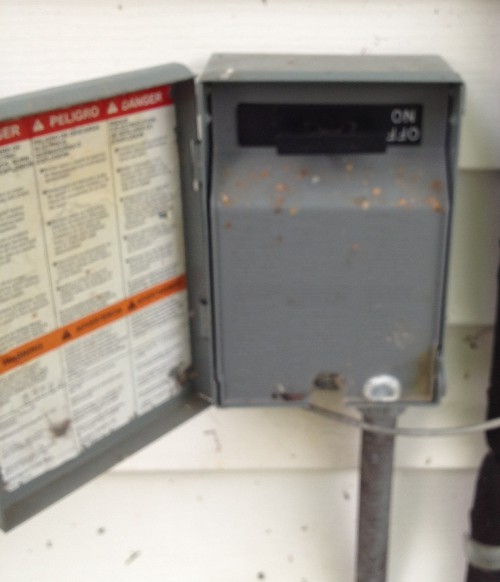
Step D: Check power
At the unit, very carefully
This is the relay. Some refer to it as the contactor.

I took the tester and touched the red probe to the red wire and the black probe to the black wire. Not actually the wire, but the screws where the wires terminated.
What should have happened was the tester should have lit up.
But it didn’t.
That was odd, but I figured I got the wrong side of the relay. So I moved the tester to the other red/black pair of screws.
Still no voltage.
I followed the wires back and saw that I had the right screws the first time.
I took the tester to the fuse box.
Red probe to the top of one fuse and black to the top of the other fuse.
Note: I took the On/Off switch out of the socket just for these photos, but it needs to be in for the actual troubleshooting.
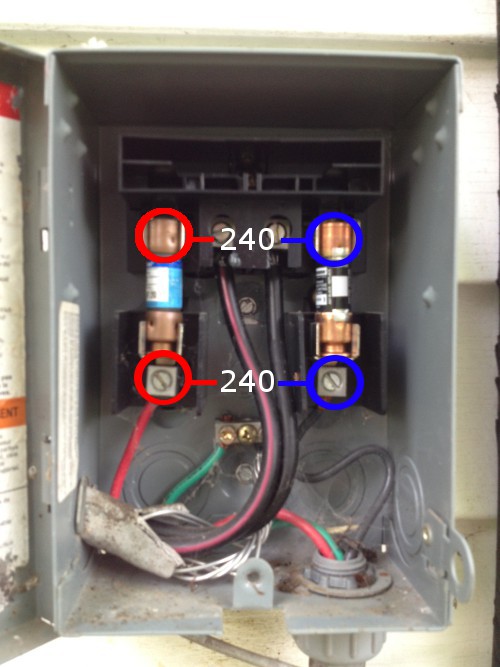
Light! That meant there was voltage.
Then I moved the probes to the bottoms of the fuses.
No light! That meant a fuse was bad.
The central air unit uses 240V, which is two opposing 120V lines. Each fuse is a 120V line, so to find the bad fuse, I went from the bottom of each fuse to ground.
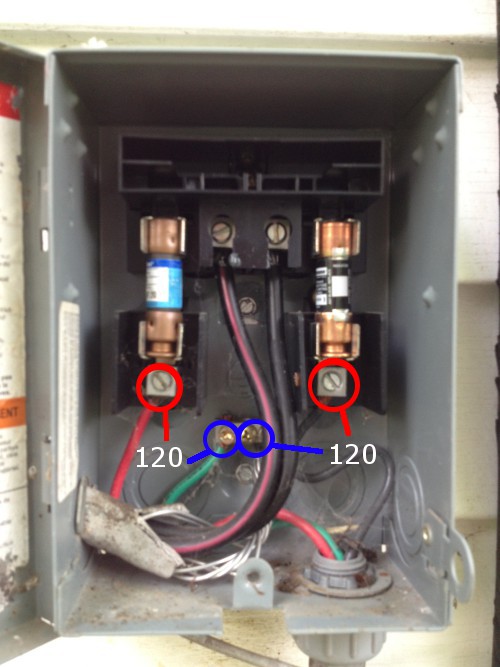
The first one lit up the 120V indicator, so that fuse was fine. The second fuse did not light anything, so it was bad.
I went to the nearby hardware store and got a pack of two fuses for $13.00.
Problem solved.
Now my AC blows cold air.
And I didn’t have to replace the capacitor like most of the search results suggested I would have to do.
His speech was smoother than butter, But his heart was war; His words were softer than oil, Yet they were drawn swords.
Psalm 55:21




This little article thingy was written by Some Guy sometime around 6:41 am and has been carefully placed in the Projects category.

 This is Alpha, the first-born, when he was 2YO.
This is Alpha, the first-born, when he was 2YO. This is Beta, the second-born, when he was about 2YO.
This is Beta, the second-born, when he was about 2YO. This is Gamma, the third-born, when he was about 18MO.
This is Gamma, the third-born, when he was about 18MO.


May 29th, 2014 at 1:30 pm
So when you replace the fuse, do you put it in really carefully? Or do you shutoff that box from the upstream fuse box (if it’s connected to that and not a separate “system”).
May 29th, 2014 at 7:20 pm
This fuse box is downstream of the circuit breaker, so I shut off power there first.
I could have left it on because the disconnect at the top of the fuse box removes power from the fuse terminals. But I chose to play it safe.